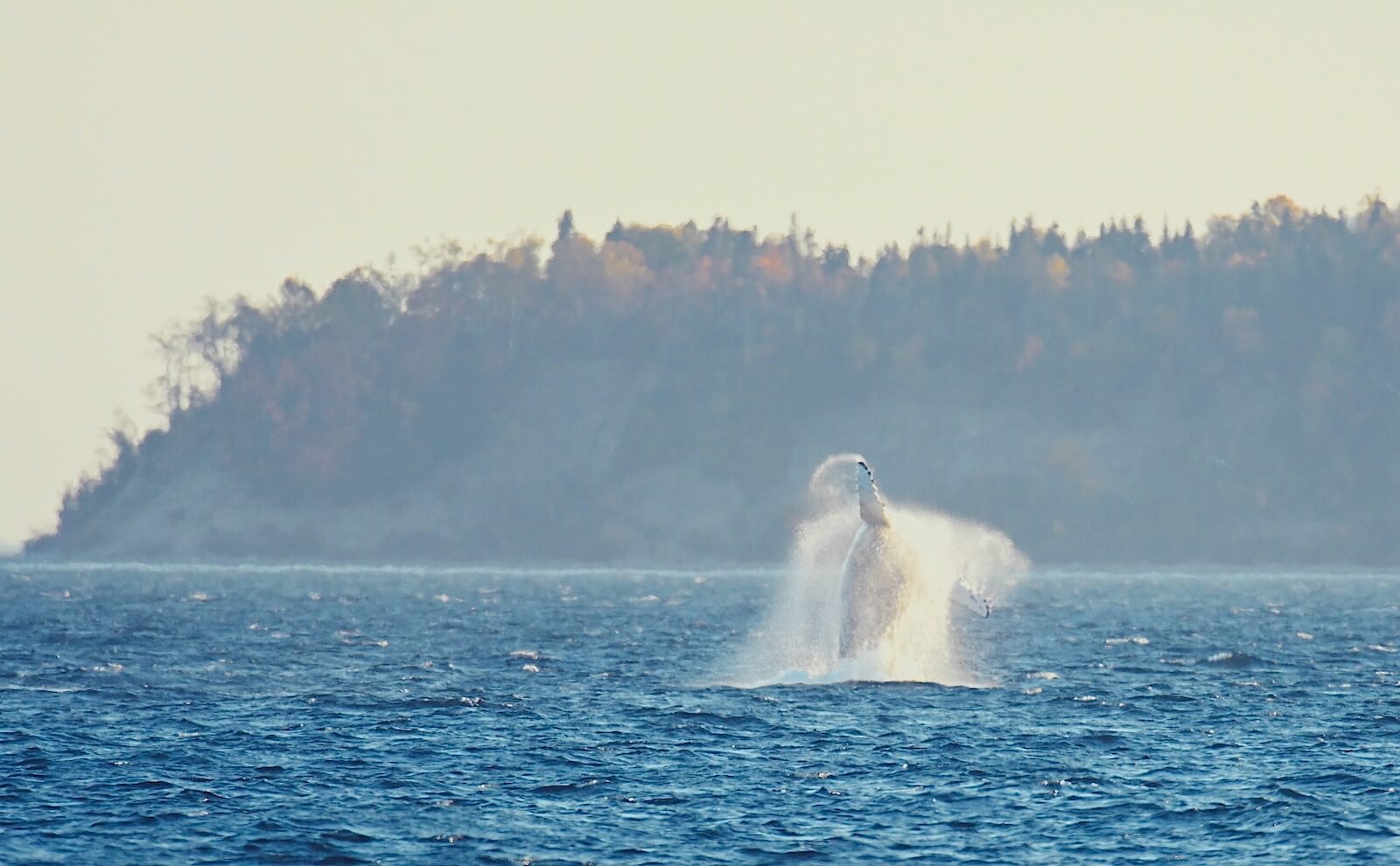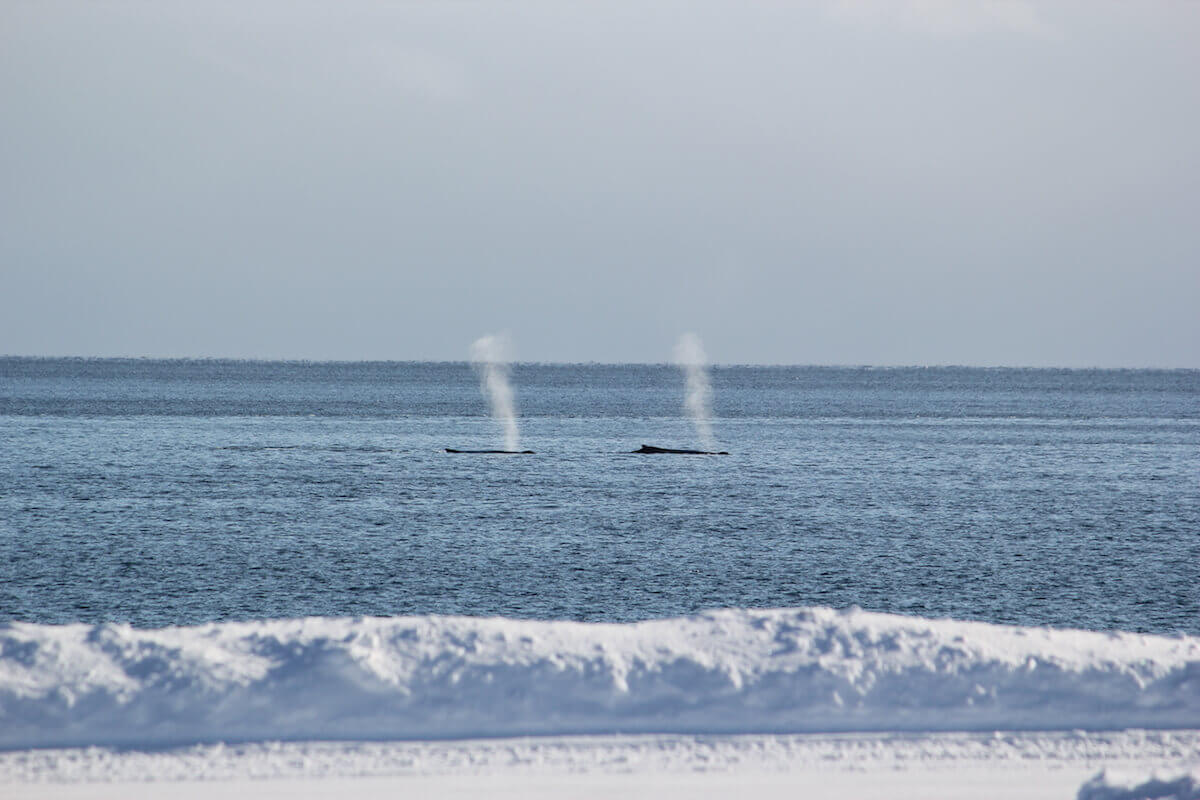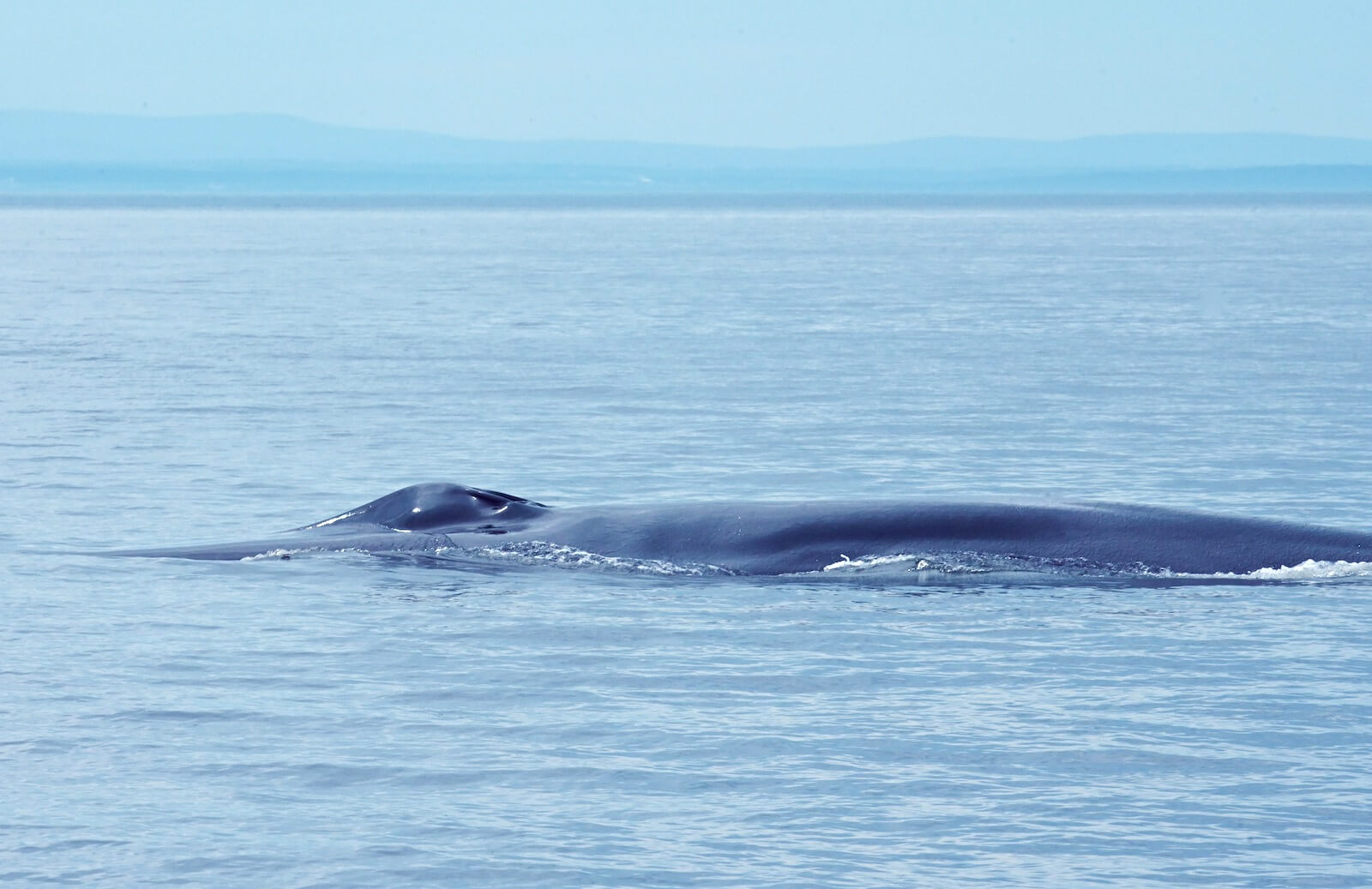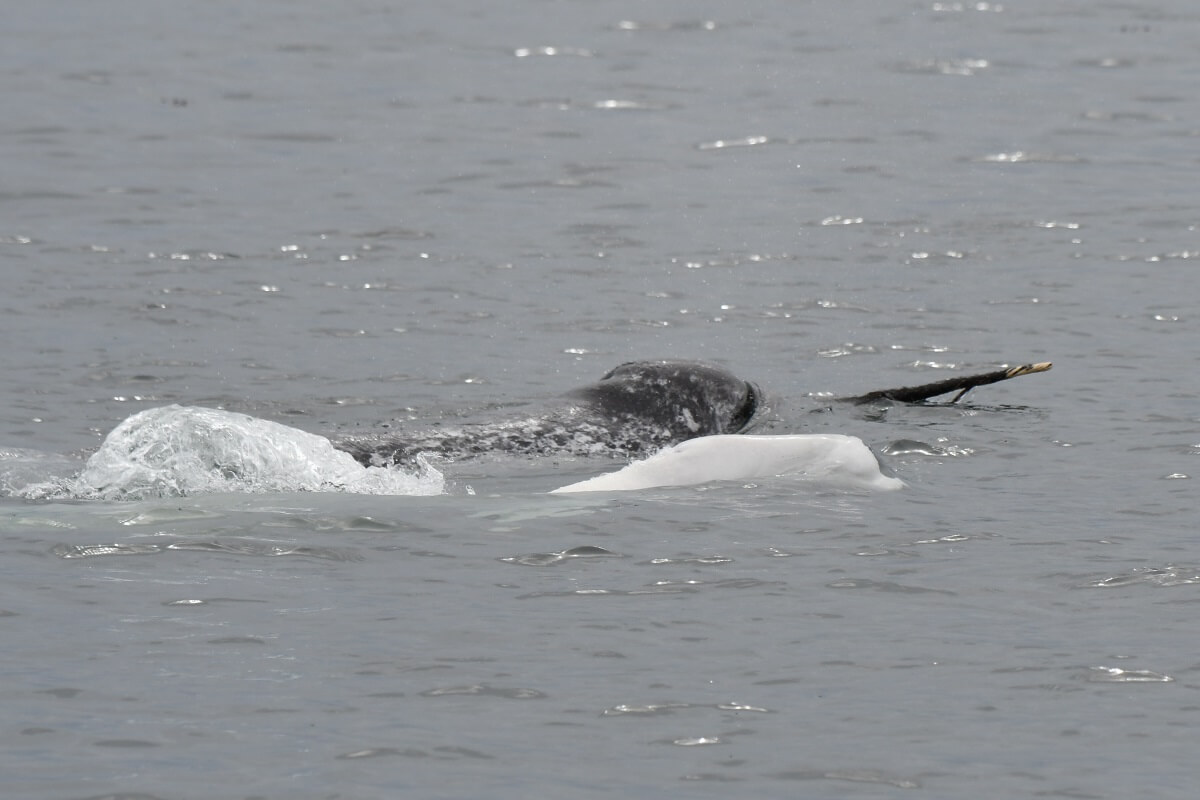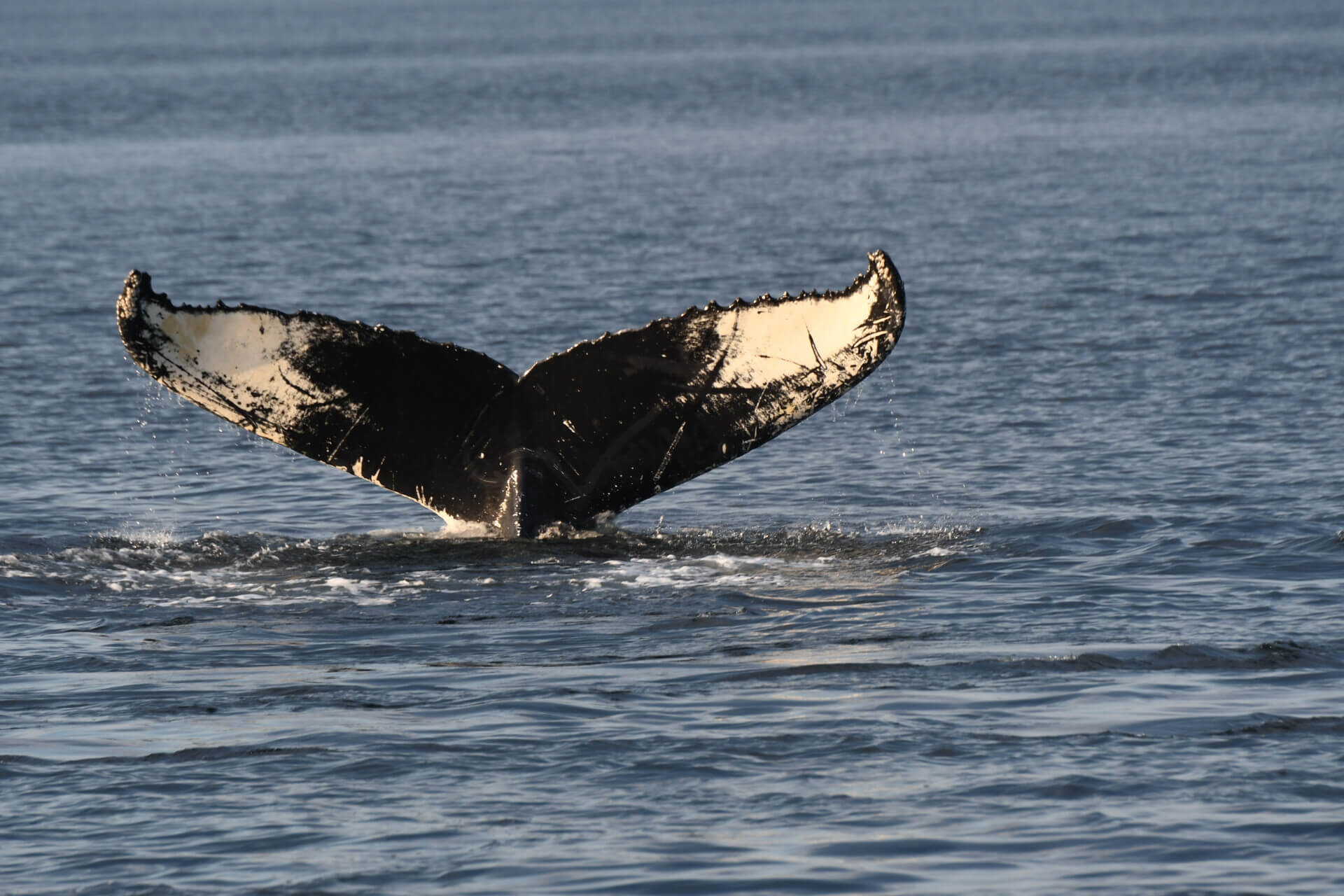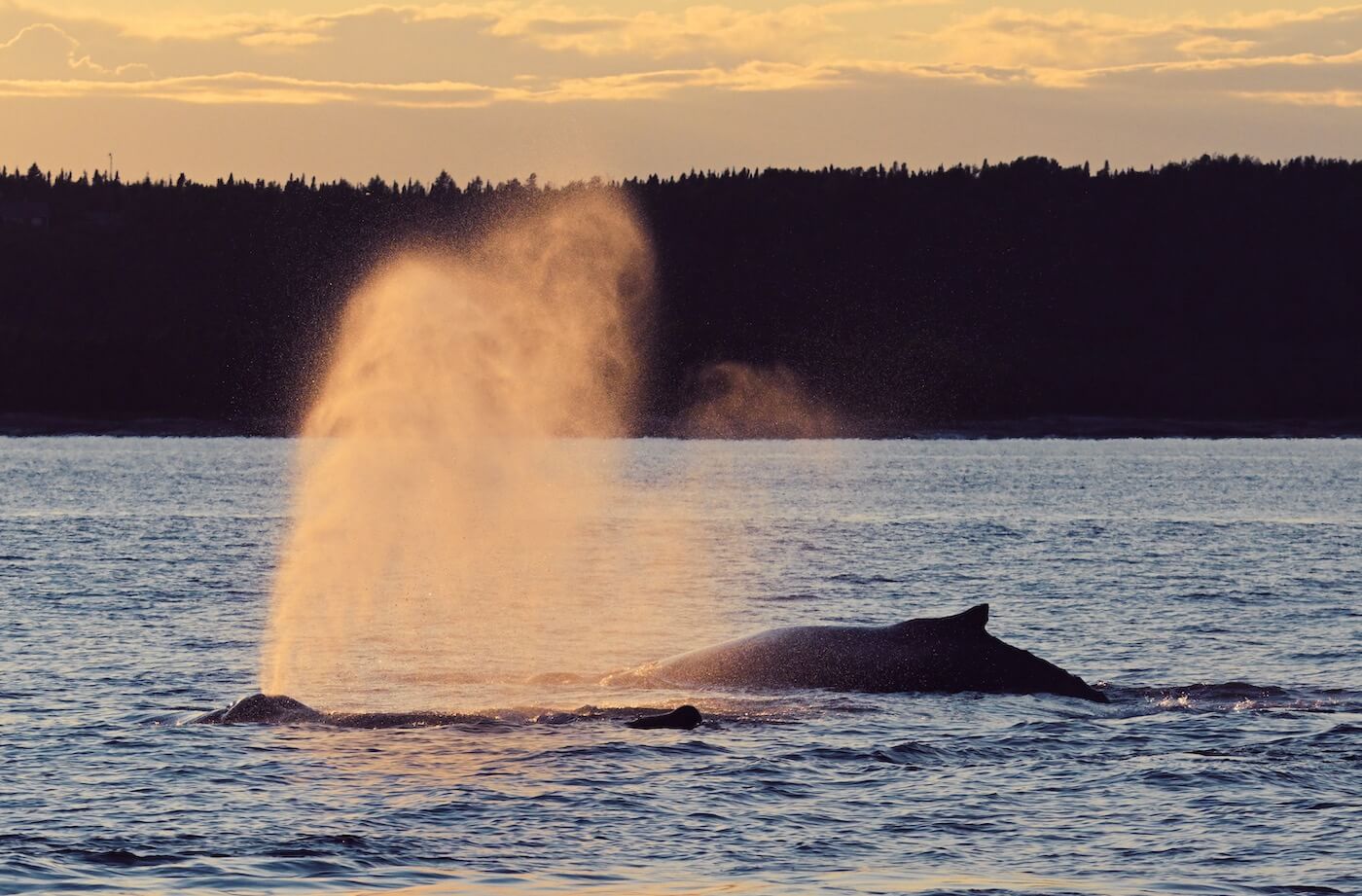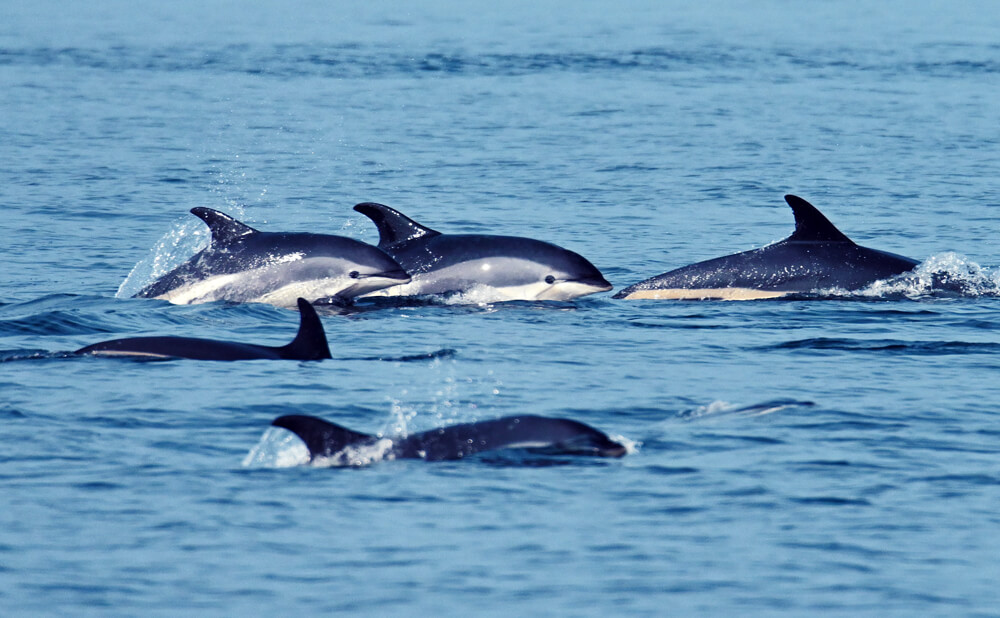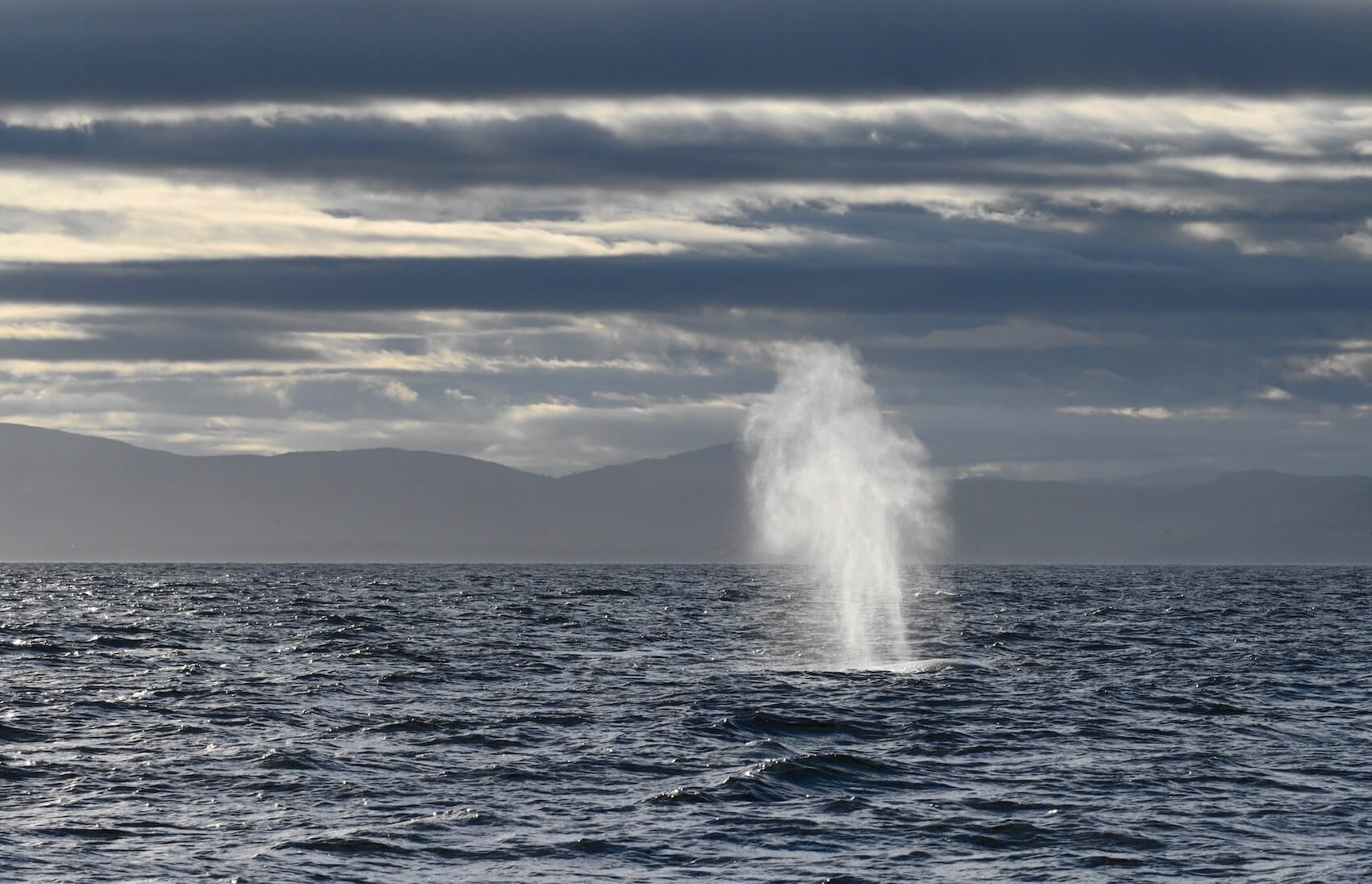For this year’s final edition of weekly sightings, we take the opportunity to look back at the highlights of the year, including blue whales in the estuary last winter, an unidentifiable rorqual, and an impressive diversity of marine mammals throughout the summer! We also answer some frequently asked questions such as whether the narwhal was seen again this year and the latest news on Tic Tac Toe.
Hardy blue whales along the North Shore
For residents of Quebec’s Côte-Nord region, one of the year’s more unforgettable observations goes back to last winter. Several blue whales approached the coast to feed. From January through early April, blue whales were seen in the estuary on a number of occasions.
In Franquelin, an enthusiast describes the unique feeding method of one individual in particular: “I could see the krill through the ice and it was so beautiful, as [the whale] would come and lean against the ice. The whale would then gently lift the ice to get to the krill underneath.” Another seasoned observer was also impressed by the manoeuvres of these giants of the sea: “What was even more fascinating was that they were surface feeding near shore almost continuously, putting on a show in which you could see their rostrum, pectoral fins and tail fins for hours on end.”
A little farther downriver, a local resident mentioned the presence of a blue whale in February as her favourite sighting of the year: “I was ecstatic and surprised, as I had never had the chance to see these whales in Gallix before and, what’s more, they were clearly visible from the shore!”
Hybrid rorqual?
One large rorqual in particular made an impression this past summer in the Saguenay–St. Lawrence Marine Park. Given the presence of certain features suggesting a fin whale and others more akin to a blue whale, scientists are still pondering whether it may have been a hybrid rorqual. Hybridization is a widespread phenomenon amongst animals.
Hybridization is a widespread phenomenon in animals. One example that comes to mind is cross-breeding between horses and donkeys, which produces a mule or a hinny. The offspring of this cross are generally infertile. Is this the case for whales? The existence of hybrids resulting from interbreeding between a fin whale and a blue whale has been known since the 1990s. One study demonstrated that these hybrids can not only reproduce, but also survive until adulthood. Of the eight individuals studied in this research, seven were the result of a cross between a male fin whale and a female blue whale (or hybrid). Two hypotheses have been put forward to explain this trend: either it might be physically difficult for a male blue whale to mate with a female fin whale, or female blue whales might be struggling to find mates of their own species with which to reproduce.
Did the narwhal visit the St. Lawrence in 2024?
The past two summers, a few observers claim to have seen a similar animal swimming amongst the belugas, but without a photo, it is impossible to validate its presence. The last confirmed sighting of the narwhal was in the summer of 2022. Here is what GREMM’s scientific director Robert Michaud has to say on the subject: “Last year (2023), we had a shorter field season due to weather and mechanical issues, so we had attributed the absence of Nordet [Translator’s note: the nickname given to the narwhal] to our low search effort… His absence, or rather the lack of any sightings, this summer is still surprising, but we have not given up hope of seeing him. Truth be told, we would all REALLY like to to see him again.”
It is recalled that in 2016, a narwhal joined ranks with belugas in the St. Lawrence. The sole representative of its species in our waters, it is believed to have made the journey from one of the more northerly populations. Narwhals generally inhabit the waters of Greenland, Norway, Russia and the Canadian Arctic. The species can be recognized by its grey and speckled skin as well as its long tooth.
What ever happened to Tic Tac Toe?
The humpback whale Tic Tac Toe was observed in the Marine Park in late May 2024. Images submitted to the Quebec Marine Mammal Emergency Response Network (QMMERN) seem to show a severely emaciated animal. The last confirmed sighting took place on June 5. Tic Tac Toe is an individual dear to the hearts of many observers. Ever since she first appeared in the Marine Park in 1999, she has remained a regular in the area and has returned several times with calves in tow. Aramis, one of her descendants, also had a calf of her own in 2020.
When they return to their spring feeding grounds, large rorquals are often thin. However, Tic Tac Toe’s physical condition is unusual. Consultations with scientists who work with large populations of humpback whales confirm that Tic Tac Toe’s situation is extreme. News about this individual, who has not been seen since June 5, 2024, can be found on the Tic Tac Toe – Live page.
Diversity
Figuring prominently in our observers’ comments this year was the diversity of species in the St. Lawrence Estuary! From shore, just about anything was possible: “My most notable observation of the season is definitely the grand slam I was lucky enough to witness from the pilot wharf in Les Escoumins: a minke whale, two humpbacks, a fin whale and a blue whale, all nearly simultaneously!” One enthusiast raved about the sunset she was able to admire in the company of four humpback whales. An evening she’ll never forget!
For one Charlevoix resident, the presence of a “hyperactive minke whale constantly breaching in the mouth of the Saguenay” was particularly striking. Even though she wasn’t able to see the whale with her own two eyes, she enjoyed gawking at a video of the animal posted on social media.
With a front row seat in Franquelin, one enthusiast was able to see a humpback whale in a deepwater area near the coast. He saw the individual dive so close to the shore that its tail fin even skimmed the rocks! He also hasn’t forgotten the minke whales plying the waters near the (Baie-Comeau?) wharf throughout the summer. In the Gaspé Peninsula, we recall the abundant white-sided dolphins, a passing basking shark and numerous humpbacks! The passage of about twenty belugas at Pointe-des-Monts and the parade of North Atlantic right whales in the Mingan sector are also not likely to be forgotten anytime soon.
See you in 2025 for more memorable observations!
Thank you to all those who contributed to the observations in 2025!
Special thanks go out to all our observers who share their love for marine mammals with us! Your encounters with cetaceans and pinnipeds are always a pleasure to read and discover.
Additionally, we would like to acknowledge the following teams that also share their sightings:
Sept-Îles Research and Education Centre (CERSI)
Group for Research and Education on Marine Mammals (GREMM)
Marine Mammal Observation Network (MMON)
Quebec Marine Mammal Emergency Response Network (QMMERN)
Mingan Island Cetacean Study (MICS)
Would you also like to share your observations?
Have you seen any marine mammals in the St. Lawrence? Whether it’s a spout offshore or just a couple of seals, drop us a line and send your photos to [email protected]!


